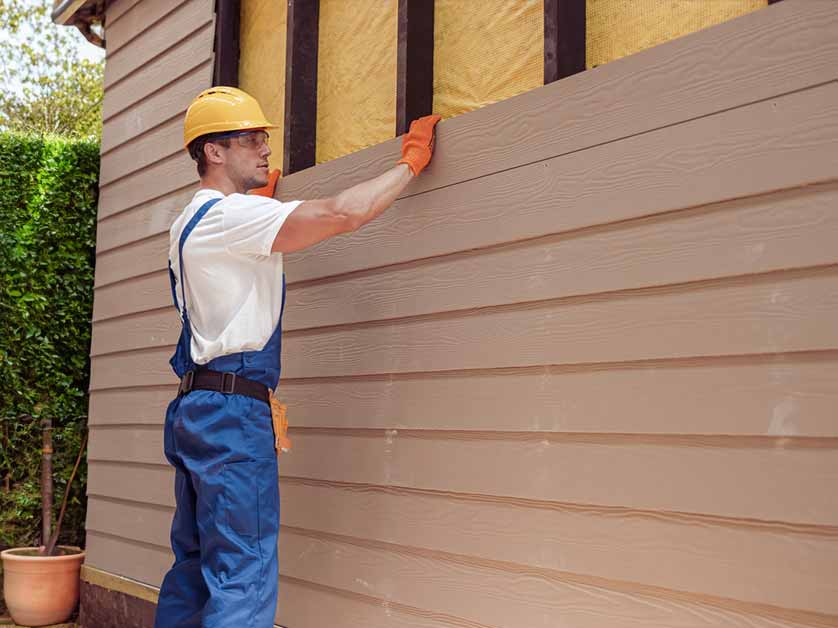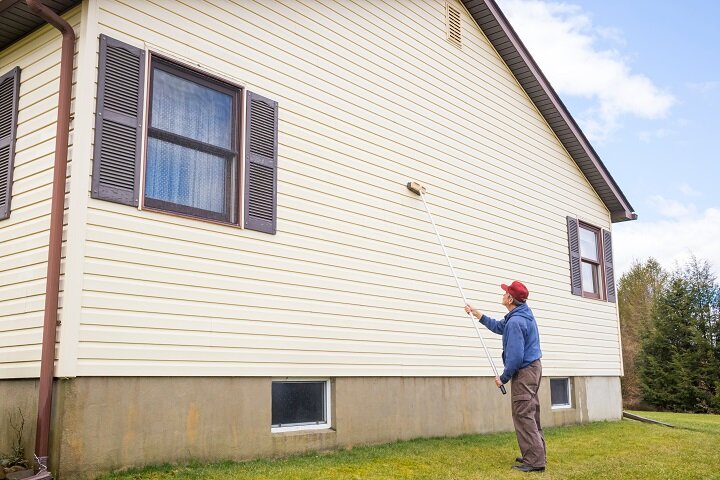Reliable Morris Siding Contractor for High-Quality Home Exterior Solutions
Reliable Morris Siding Contractor for High-Quality Home Exterior Solutions
Blog Article
The Important Overview to the Different Sorts Of Siding and Their Unique Advantages
In the world of home enhancement, choosing the appropriate siding is an important choice that influences both visual allure and useful efficiency. With so lots of alternatives to think about, which exterior siding material really stands out for your certain job?
Wood Siding
Wood house siding, a popular option for residential exteriors, provides an ageless visual that incorporates natural charm with architectural honesty. This home siding material is available in numerous designs, consisting of clapboard, roof shingles, and board-and-batten, permitting home owners to tailor their façade to match their design preferences. Wood house siding is typically crafted from sturdy species such as cedar, redwood, or ache, which are recognized for their durability and ability to hold up against environmental stressors.
Among the primary advantages of wood exterior siding is its excellent insulation homes, which can add to power efficiency and reduced heating prices. Furthermore, wood house siding is eco-friendly, making it an eco-friendly choice when sourced sustainably. Routine maintenance, consisting of paint or discoloration, can prolong its life expectancy and boost its appearance, allowing home owners to protect the natural charm of the timber.
Nonetheless, prospective drawbacks consist of sensitivity to bugs, rot, and weather condition damages, necessitating adequate treatment and upkeep - morris siding contractor. In spite of these issues, when effectively looked after, timber home siding can supply a long lasting and gorgeous option that enhances the personality of a home while supplying a warm, inviting atmosphere

Vinyl House Siding
Plastic house siding has arised as a leading choice for home owners looking for a low-maintenance exterior choice that combines toughness and price. This versatile material is crafted from polyvinyl chloride (PVC), making it resistant to different weather, consisting of wetness and UV rays. Because of this, vinyl house siding does not warp, rot, or fade, ensuring resilient visual appeal.
One of the key benefits of plastic exterior siding is its comprehensive series of styles and colors, enabling property owners to achieve the preferred look for their residential property without the demand for constant repainting. In addition, vinyl siding is simple to mount, which can significantly lower labor costs throughout building or improvement tasks.
Vinyl siding likewise contributes to power performance. Numerous alternatives attribute insulation backing, which enhances thermal efficiency, aiding to keep comfy indoor temperature levels and possibly decreasing energy costs. Its smooth surface area facilitates simple cleansing, calling for just routine washing with a garden tube to remove dust and debris.
Fiber Cement House Siding
Fiber concrete siding has gained traction among building contractors and property owners alike because of its exceptional combination of resilience and aesthetic convenience. Composed of a combination of sand, cement, and cellulose fibers, this home siding option is engineered to hold up against severe weather, consisting of high winds, hefty rain, and temperature variations, making it a durable choice for household exteriors.

One of the main advantages of fiber cement home siding is its resistance to insects, such as termites, and its non-combustible nature, offering improved fire safety and security. morris siding contractor. Furthermore, it is available in a broad selection of shades, styles, and textures, enabling property owners to attain their wanted aesthetic without compromising efficiency
Another benefit is its reduced upkeep requirements; fiber cement exterior siding generally needs painting or staining every 5-10 years, which is less frequent than various other products. Its durability adds to a lower general price of ownership, as it lowers the requirement for frequent fixings or replacements.
Ultimately, fiber cement home siding represents a superb financial investment for those seeking a resilient, attractive, and functional outside alternative, combining both kind and function to boost the home's visual appeal.
Metal House Siding
The attraction of metal house siding lies in its robust sturdiness and modern-day visual allure, making it a preferred option for contemporary architecture. Available in materials such as aluminum and steel, metal home siding provides an array of colors and finishes, enabling homeowners to attain an individualized look that complements their style vision.

Energy efficiency is one more considerable benefit, as many metal siding products are developed with insulation choices that assist manage interior temperature levels. This can lead to reduced energy costs in time. Furthermore, steel house siding is typically recyclable, making it an eco-friendly selection for sustainability-minded home owners.
The installment procedure for steel siding can be fairly simple, causing a quicker turn-around time for building and construction projects. Overall, metal siding combines functionality and design, making it a useful option for those looking for a enduring and visually attractive exterior finish.
Block and Rock Exterior Siding
Block and rock siding sticks out as a classic choice that boosts the aesthetic beauty of any home. Recognized for their sturdiness and reduced maintenance, these products give an extraordinary return on investment while boosting the home's visual charm. Offered in different colors, appearances, and patterns, block and rock can be tailored to suit diverse architectural designs, from traditional to modern-day.
One of the key advantages of brick and rock siding is their energy performance. Both materials possess all-natural shielding properties that help control interior temperature levels, potentially minimizing heating & cooling costs. Furthermore, they supply superior fire resistance compared to various other house siding options, adding to improved safety and security.
Another benefit is their long life. Block and rock can last for years, typically blog here calling for marginal maintenance past periodic cleansing. Unlike timber siding, they are invulnerable to insects and rot, making sure a durable outside that holds up against the components.
Conclusion
In summary, the selection of siding considerably affects a home's aesthetic charm, energy efficiency, and maintenance needs. Each kind of home siding-- whether timber, vinyl, fiber steel, brick, or cement and rock-- supplies one-of-a-kind advantages tailored to various homeowner choices and ecological conditions. Comprehending these options enables educated choices that improve both the longevity and aesthetic appeal of domestic outsides. Inevitably, choosing the right siding is essential for attaining a balance between capability and style in domestic architecture.
One of the main advantages of wood siding is its superb insulation residential properties, which can contribute to power effectiveness and lower home heating costs. Additionally, timber exterior siding is eco-friendly, making it an eco friendly option when sourced sustainably.One of the key benefits of steel house siding is its resistance to various ecological variables.Energy effectiveness is an additional significant advantage, as several steel exterior siding products are made with insulation options that assist control interior temperatures. Each type of home siding-- whether wood, plastic, fiber steel, concrete, or brick and rock-- supplies distinct advantages tailored to content various house owner choices and environmental problems.
Report this page